Accurate measurement and the right type of ingredient are two of the essential parts of baking. Therefore, it’s very important to know the characteristics of every ingredient beforehand.
As a result, a baker can think and plan and knows exactly how it should turn out. Needless to say, among almost every baking item flour is the key ingredient.
Hence today we gathered all the information about 7 types of flour used for baking. We included the nutrition facts, characteristics, and uses so that you can be aware of the facts and nutrition intakes of your item!
No matter if you are a novice, professional, or fitness lover, you can get help from this article and know everything you need to.
Top 7 Types of Flour Used for Baking
Every type of flour is used for different kinds of items. We included some of the top ones professional bakers use. Let’s have a look:
1. All-Purpose Flour
The name says it all. This is the most used basic flour that can go with almost every type of food. It’s produced from hard and soft heat mixture. There are two types of it: bleached and unbleached.
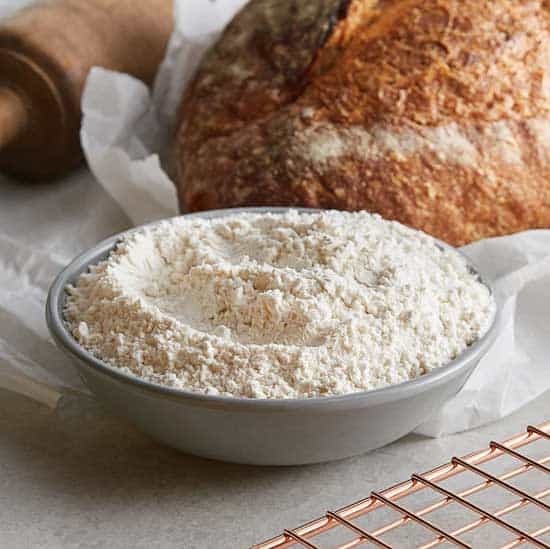
Unbleached flour is mostly natural, whereas bleached all-purpose flour contains chemicals like bleaching agents for a whiter color, faster and larger production. It has improved elasticity and rise. This one also has less protein than unbleached.
If you are worried about extra protein intake, you can go with bleached flour. This type of flour is used for flakey and fluffy types of food because of the structure of its gluten. But the amount of protein creates tender texture.
Nutrition
All-purpose flour has 12-13% protein which is a moderate amount. Per cup contains 440 calories, 4g fat, 20 mg sodium, 93g carbs. It doesn’t contain minerals or vitamins.
Characteristics
Flakey, fluffy, crunchy.
Usage
Pie crust, cookies, biscuits, pancakes, bread, muffins, etc.
2. Bread Flour
This is usually a high protein type, which is why it has high gluten too. Gluten amount is the reason behind the texture of the food. It makes the dough enlarged and lets it intake an extra amount of air.
For this, high protein or gluten creates strong texture when mixed with water. Since bread flour has high gluten, it creates chewy and strong structured items. It also creates the crust browner.
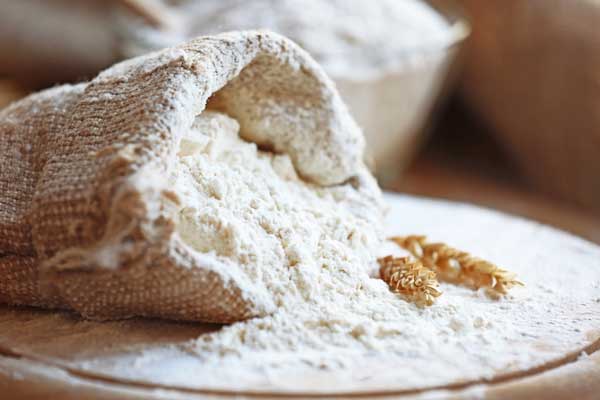
This one is produced from hard wheat and is refined. It’s mostly used for bread and other yeasted food. Just like all-purpose, it can be found as bleached or unbleached.
Hence bread flour can be used as an alternative to unbleached all-purpose.
Nutrition
13-15% Protein. Each cup contains 440 calories, 16g protein, 0 mg sodium, 2g fat, 4g fiber, etc.
Characteristics
Brown crust, chewy, strong structured.
Usage
Bread, pastry dough, pizza dough, yeasted items, bagels, cookies, etc.
3. Cake Flour
Unlike bread flour, this type has the lowest amount of protein. That means lower gluten. Cake flour has a delicate and tender texture. It can’t create any strong gluten bond or chewy and hard bread. For this reason, cake flour is a perfect choice if you want to bake airy pastries or cakes.
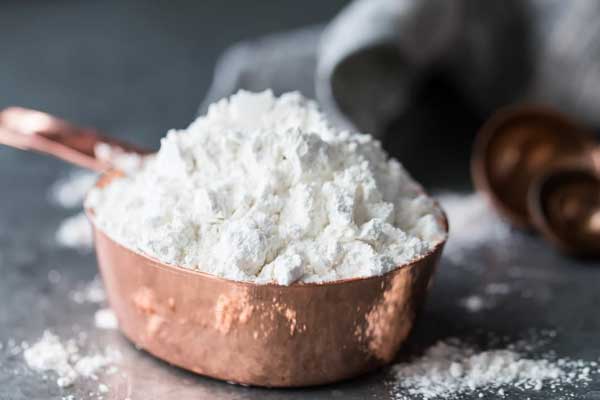
This one is produced from fine white starchy flour hence the soft texture. It goes through a chemical process which enfeebles it’s gluten bonds and allows it to contain more sugar and liquid by altering the starch.
You can make cake flour substitute by adding cornstarch to all-purpose flour.
Nutrition
5-8% protein. Per cup contains 96g carbs, o mg sodium, 440g calories, 4g fiber, 8g protein, 0g sugar, etc.
Characteristics
Moist, delicate, fluffy, tender, airy.
Usage
Sponge cakes, cheesecake, layer cakes, chiffon, muffins, etc
4. Whole Wheat Flour
This flour has more protein percentage than all-purpose flour. Surprisingly, it can create a tender, delicate texture as well as a hard, strong bonded texture.
The reason is this flour is produced from all three parts of wheat: germ, endosperm, and bran. Because of the germ and bran, whole wheat flour can not produce as strong gluten bond and elasticity as all-purpose flour. Yet it creates more dense and heavy items than cake flour.
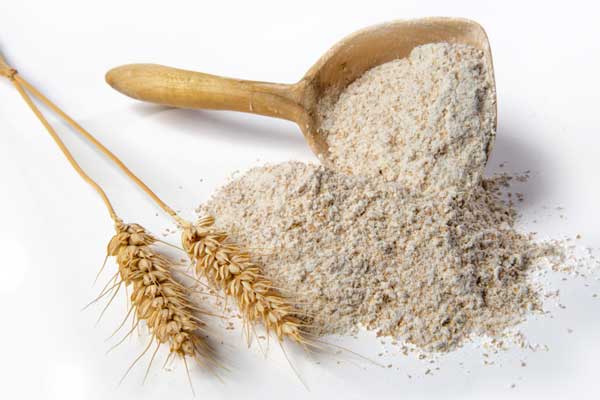
This flour has high nutrition, protein, and fiber. It can be used as an alternative to half of the all-purpose wheat, which can increase the nutrition and flavor. You need to be extra careful while mixing this flour with liquids since it already holds a higher amount of liquids than all-purpose flour.
The storage system is kind of different. You need to keep it somewhere cool for 3-4 months, then you need to keep it in a fridge.
Nutrition
14% protein, minerals such as copper, selenium, phosphorus, manganese. Each cup contains 480 calories, 18.5 g protein, 4 mg sodium, 16 g fiber, 2 g fat, 96 g carbs.
Characteristics
Dense, delicate, heavy.
Usage
Bread, pancakes, cookies, pasta, pizza dough, cookie dough, etc
5. Pastry Flour
Pastry flour is almost like cake flour. Although it creates less moist and tender texture, the protein percentage is lower than most others. As a result, this flour creates a mixture of fakey and tender which is why the name pastry flour.
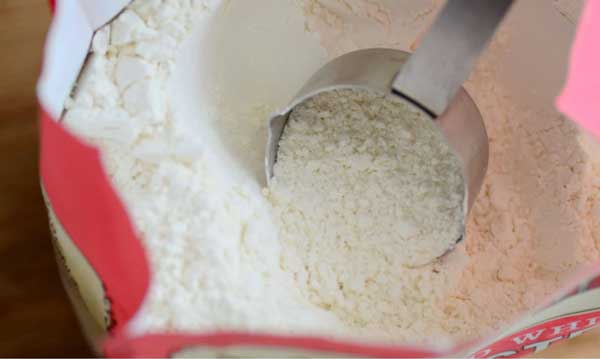
It is produced from soft white wheat. This wheat contains a lower amount of gluten and protein than red wheat.
There are two types of pastry flour: unbleached and whole wheat. The unbleached wheat is where the germ and bran have been removed for a lower amount of protein. This whole wheat version creates a more delicate and moist texture. You can make pastry flour from mixing all-purpose flour and cup cake flour — the ratio is 1:2.
Nutrition
8-11% protein. Each cup contains 480 calories, 12 g protein, 4 mg sodium, 2 g fat, 0 g sugar, 4 g fiber.
Characteristics
Delicate, soft, airy, crusty, moist, tender.
Usage
Pastries, pie crust, muffins, cookies, biscuits, tarts, etc
6. Gluten-Free Flour
This flour has gotten quite popular lately among consumers due to allergies, restrictions, and health consciousness. There are a lot of varieties of this flour. It is made from nuts, rice, corn, grains, potato, quinoa, and starches.
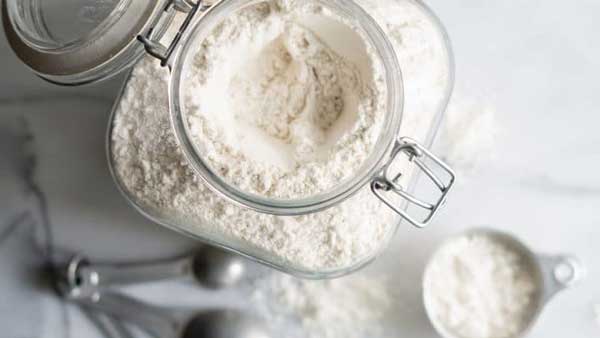
Since the lack of gluten decreases the chewiness, you can easily increase it by adding xanthan gum.
Other than that it has the texture and taste of wheat flour. It is also high in vitamins and minerals. But baking with this flour can be a little tricky. Gluten-free flour can’t create a strong structure or texture without starch.
Nutrition
Each cup contains 480 calories, 60 mg sodium, 4g sugar, 0 g fat, 0 g fiber, 8 g protein, 104 g carbs.
Characteristics
Tender, moist, delicate.
Usage
Gluten-free diets, cookies, muffins, cakes, bread, pastries, etc
7. Self Rising Flour
This flour is an enhanced version of all-purpose flour. Usually, if you mix salt and baking powder with all-purpose flour, you should be able to get self-rising flour. It contains low protein and creates a tender mixture.
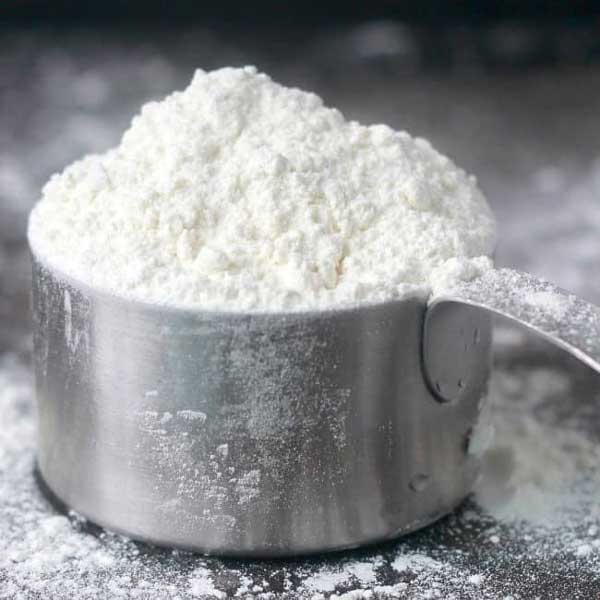
Furthermore, this can also save a lot of time for a baker since it contains salt and baking powder in it. That being said, this flour is not suitable for yeasted items like bread. So bakers need to be extra careful while adding the other ingredients with it.
Nutrition
0 g fat, 88 g carbs, 480 calories, 0 g sugar, 12 g protein.
Characteristics
Delicate, tender, moist.
Usage
pancakes, muffins, cookies, biscuits, pie crusts.
Conclusion
The selection of flour largely depends on the baking item you are planning to make. Each flour has different nutrients, texture, and protein percentages. If you want to look at a thorough list of all kinds of flours check out the Flour Power List.
Knowing the types of flour used for baking can improve your baking skills as well as enhance the taste of your items. The next time you need to buy a new type of flour, don’t forget to take a look at our article and make the perfect cupcake ever! Happy baking!

